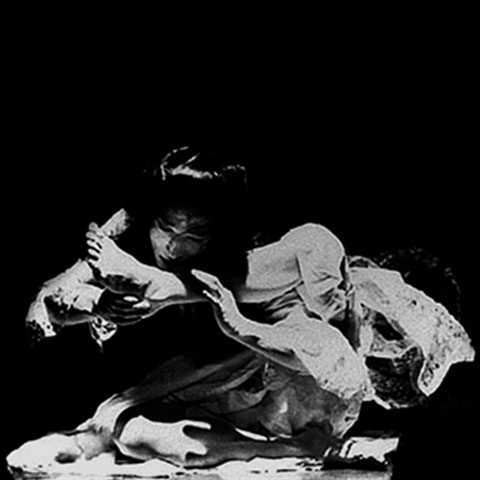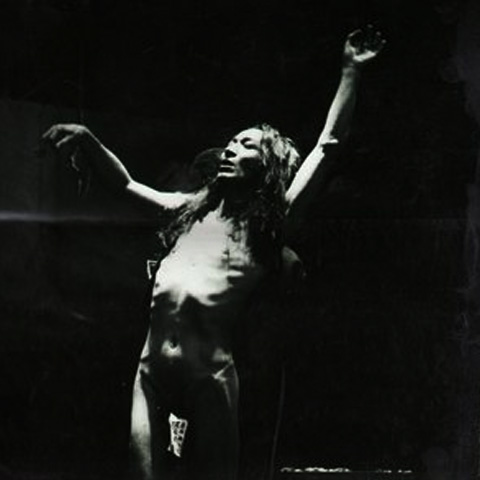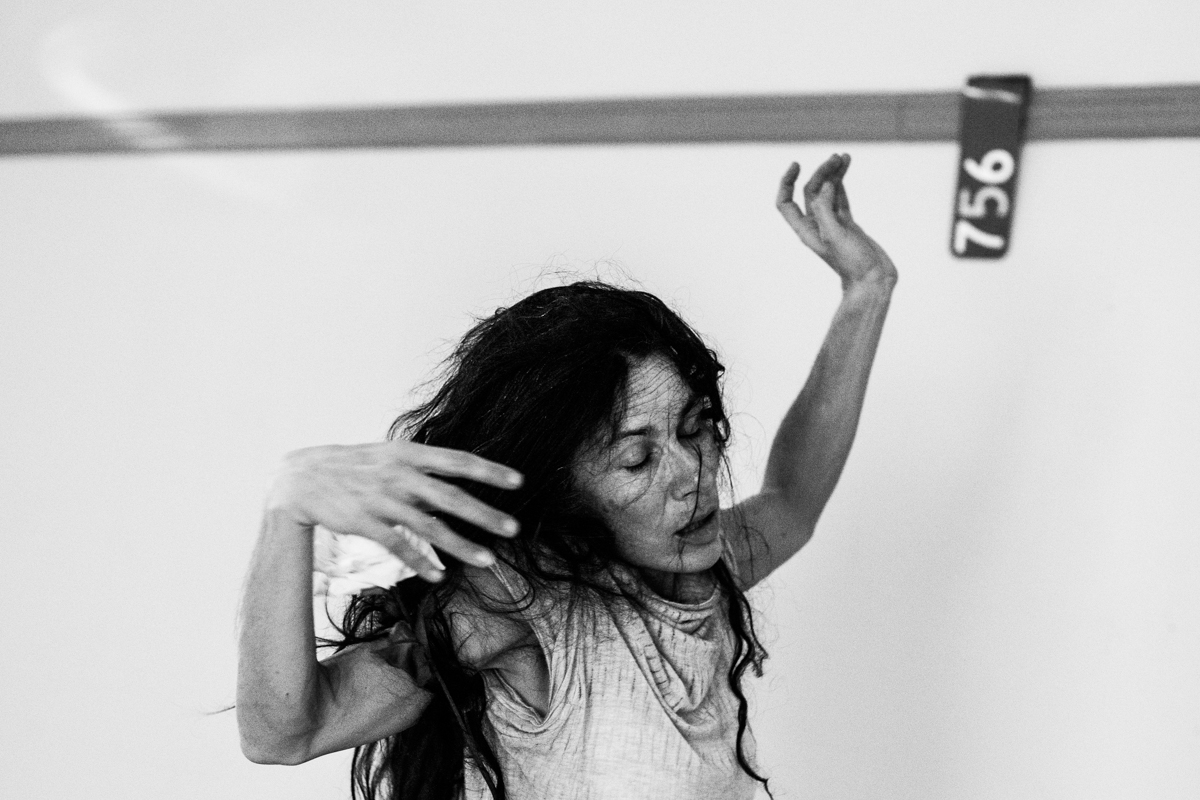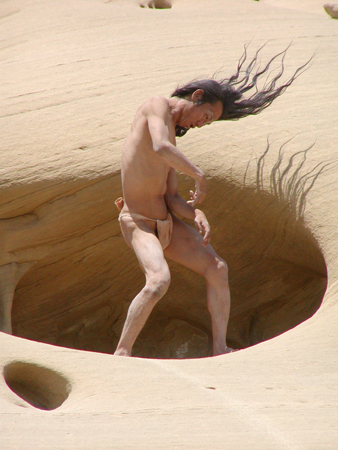– Tadashi Endo (Göttingen-based Butoh dancer, Director of Butoh-Center MAMU and Butoh-Festivals MAMU)


Masaki Iwana (on left) © Laurent Dumont, and Masaki Iwana (on right).
Developing Consciousness Through Butoh
Without being overtly spiritual, Butoh is an experience of unordinary consciousness. In the contorted forms of Butoh dancers, we remember the extremities of identity and disengagement to which they must go for the sake of embodiment. Emptiness, always such vast emptiness… but nothing else can communicate greater truth. The constructed self, teetering precariously between scripted roles and actions, must be suppressed in favor of the totality of being — a grandiose concept on its own, but no more perfectly suitable for exploration than within Butoh. It is this honest experimentalism that allows Butoh to touch the sublime. Improvisation reflects internal truth, speaking more purely to subjective human experience than any mechanized course of movement. It is a glimpse into a world that barely slips outside of the reach of our lucid experience — a world that deeply thirsts for sense and familiarity within chaos.
Butoh forces us to confront this absurdity, no matter if we are dancers or observers. The struggle of the dancer is to overcome aesthetic molds for the body and to express physical existence in its most intuitive form. As an audience, we may not know what to think of the bizarre and often frightening shapes that we know to be human, but which speak to us in so coarse and enigmatic a language. In its most poetic expression, Butoh explores the encounter of an embodied being not only with the space and the otherness of the space which encompasses them, but also the awe and terror that live within us in their greatest forms.
It is when we are incited by this absurdity that we begin to transform. This does not by any means assert a form of external power upon Butoh. No, for the personal evolution that can become the protagonist is always directed from within and is never imposed. It would be dangerous to assume Butoh to be a universal language, but it most certainly communicates universal themes. The transformative power is in the decision to accept an expression that is unfamiliar and provocative. When dance reminds us of our borne realities and when it transports us into an alternative, we are given the opportunity to channel these incredible capacities. And it is through the constant exploration of communication that we can grasp the significance of Butoh that is unique to us and our understanding of the world.
Atsushi Takenouchi © Hiroko Komiya
Ω
Butoh Resources & Links
DANCERS
TADASHI ENDO // www.tadashi-endo.de
MAUREEN FREEHILL // www.butopia.org + www.momobutoh.net
TETSURO FUKUHARA // www.ne.jp/asahi/tokyo/sd/index_e.html
FLORENCIA GUERBEROF // www.florenciaguerberof.com
KATSURA KAN // www.katsurakan.org
SIMONA ORINSKA // www.simonaorinska.info/bioeng.php
MARIE-GABRIELLE ROTIE // www.rotieproductions.com
PHOTOGRAPHERS
ABE FRAJNDLICH // www.abefoto.com
ADAM LACH LUNARIS // www.adamlunaris.com + www.luna-graphy.com
PATRICK ROCHON // www.patrickrochon.com
ESTHER SUAVE // www.esthersuave.com









[…] Butoh Dancing (舞踏): Discovering Emptiness, Embodiment & Environment in an Archeology of Body: http://www.redefinemag.com/2013/international-butoh-dancing-emptiness-embodiment-environment-archeol… […]
Hi Yan, Thank you so much for your kind words 🙂 Glad you enjoyed the article!
Even if I was not honored to be interviewed by you in this article, I would still be very impressed with your research and perspective Lital. Thank you for your careful and thorough attention to this important art of our times. Hopefully it will inspire people to attend a performance or workshop themselves as that is really the definitive way for this art to be experienced — directly through the body in real time + space.
[…] ARTICLE: BUTOH DANCING (舞踏): DISCOVERING EMPTINESS, EMBODIMENT & ENVIRONMENT IN AN ARCHAEOLOGY OF BOD… // Redefine […]
[…] Discovering Emptiness, Embodiment & Environment in an Archeology of Body’. Available at: http://www.redefinemag.com/2013/international-butoh-dancing-emptiness-embodiment-environment-archeol… (Accessed: 12 June […]